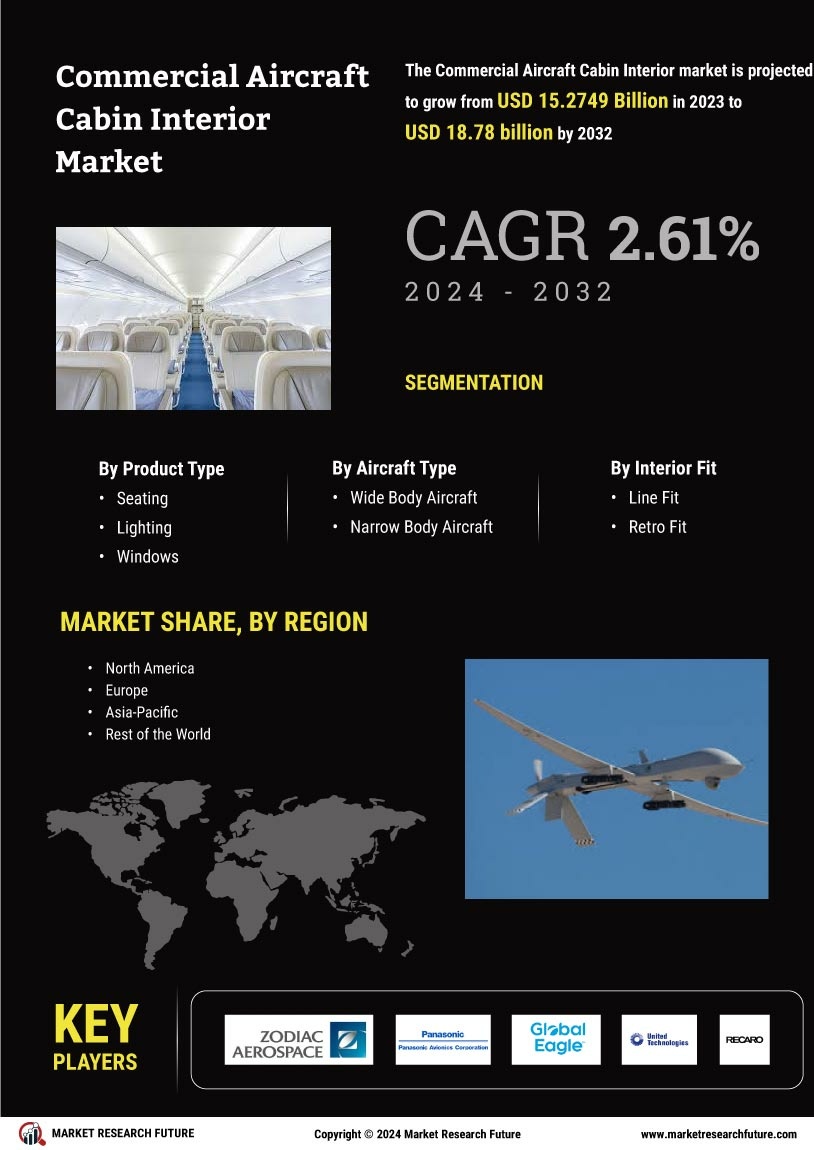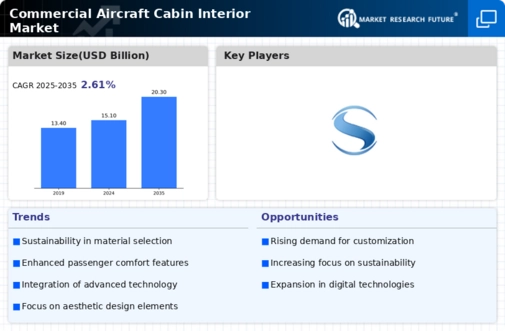Regulatory Compliance
Regulatory compliance is a critical driver in the Global Commercial Aircraft Cabin Interior Market Industry. Governments and aviation authorities impose stringent regulations regarding safety, comfort, and accessibility in aircraft cabins. Compliance with these regulations necessitates continuous updates and modifications to cabin interiors, prompting airlines to invest in new designs and technologies. For instance, regulations concerning fire safety and emergency evacuation procedures require specific materials and layouts that can influence cabin design choices. As the industry adapts to these evolving regulations, the demand for compliant cabin interiors is expected to grow, further propelling market expansion.
Market Diversification
Market diversification is emerging as a key driver in the Global Commercial Aircraft Cabin Interior Market Industry. Airlines are increasingly exploring various market segments, including low-cost carriers and premium services, to cater to diverse passenger needs. This diversification leads to a broader range of cabin interior designs, from basic to luxurious, allowing airlines to target specific demographics effectively. The ability to offer tailored experiences is likely to enhance customer satisfaction and loyalty, contributing to overall market growth. As airlines continue to innovate and adapt their offerings, the market is poised for expansion, reflecting the dynamic nature of consumer preferences.
Market Growth Projections
The Global Commercial Aircraft Cabin Interior Market Industry is projected to witness substantial growth in the coming years. With a market value of 15.1 USD Billion in 2024, it is expected to reach 20.3 USD Billion by 2035, indicating a steady upward trajectory. This growth is underpinned by a compound annual growth rate of 2.7% anticipated from 2025 to 2035. Such projections highlight the increasing investments in cabin interiors as airlines strive to enhance passenger experience and operational efficiency. The market dynamics suggest a robust future, driven by evolving consumer preferences and technological advancements.
Sustainability Initiatives
Sustainability is becoming increasingly central to the Global Commercial Aircraft Cabin Interior Market Industry. Airlines are under pressure to adopt eco-friendly practices, leading to a demand for sustainable materials and designs in cabin interiors. This includes the use of recycled materials, energy-efficient lighting, and environmentally friendly manufacturing processes. As regulatory frameworks evolve and consumer awareness grows, airlines are likely to prioritize sustainability in their cabin designs. This shift not only aligns with global sustainability goals but also appeals to environmentally conscious travelers, potentially enhancing brand loyalty and market share in an increasingly competitive landscape.
Technological Advancements
Technological innovations play a pivotal role in shaping the Global Commercial Aircraft Cabin Interior Market Industry. The integration of advanced materials and smart technologies enhances passenger experience and operational efficiency. Innovations such as mood lighting, noise reduction systems, and improved seating designs are becoming standard features in modern aircraft. These advancements not only improve comfort but also contribute to weight reduction, which can lead to fuel savings for airlines. As airlines seek to differentiate themselves in a competitive market, the adoption of these technologies is expected to drive growth, with a compound annual growth rate of 2.7% anticipated from 2025 to 2035.
Increasing Passenger Demand
The Global Commercial Aircraft Cabin Interior Market Industry is experiencing a surge in passenger demand, driven by rising global air travel. In 2024, the market is projected to reach 15.1 USD Billion, reflecting the growing need for enhanced cabin interiors that prioritize comfort and aesthetics. Airlines are increasingly investing in modernizing their fleets to attract more travelers, as consumer preferences shift towards more luxurious and spacious environments. This trend is likely to continue, with projections indicating a market value of 20.3 USD Billion by 2035, suggesting a robust growth trajectory fueled by the increasing number of air passengers globally.



